Delay effects are all about adding space, depth, and rhythm to your tracks.
They can create everything from subtle echoes to complex, evolving soundscapes that add unique character to any mix.
Plus, delay effects help your tracks feel full and polished 一 giving each element room to breathe, which is super important.
As producers, it’s key to know all the different delay types so you can choose the perfect effect like a professional, whether you’re creating ambient textures or driving patterns.
That’s why we’re breaking down everything you need to know, like:
- Analog and digital delay ✓
- Tape delay ✓
- Ping-pong delay ✓
- Slapback delay ✓
- Granular delay ✓
- Pro tips for all types of delay (e.g., analog and tape delays) ✓
- Tempo-synced delay ✓
- Ducking delay ✓
- Multi-tap delays ✓
- Modulated delay ✓
- Dynamic delay ✓
- Bucket brigade delays ✓
- How to get the same sound as the pros ✓
- Much more about all the different delay types ✓
You’ll know all the different delay types so you can tweak your effects to fit any style and get that polished, professional sound every single time.
Also, you’ll never feel lost choosing a delay, or worry about it cluttering your mix.
This way your tracks will be balanced and dynamic, plus feel full, immersive, and uniquely yours with any delay types you want.
Table of Contents
- Before Getting Started: Key Parameters of Delay
- Different Delay Types
- #1. Analog Delay
- #2. Tape Delay
- #3. Digital Delay
- #4. Slapback Delay
- #5. Double Delay
- #6. Ping-Pong Delay
- #7. Multi-Tap Delay
- #8. Modulated Delay
- #9. Reverse Delay
- #10. Granular Delay
- #11. Dynamic Delay
- #12. Stereo Delay
- #13. Tempo-Synced Delay
- #14. Ducking Delay
- #15. BBD (Bucket Brigade Device) Delay
- #16. Tape Stop Delay
- Final Thoughts
Before Getting Started: Key Parameters of Delay

Before we dive into the actual delay types (e.g., analog delays or a tape delay) it’s important to understand the key parameters that shape each unique delay effect. This way, you can have precise control over each delay and tweak them to fit your mix and signature sound.
-
Delay Time
The delay time determines the interval between the original sound and the delayed signal. Adjusting this parameter allows you to create anything from a tight slapback delay to long, spacious echoes.
Shorter delay times (below 80ms) can make a doubling effect, and longer times (above 300ms) are ideal for creating rhythmic or ambient effects.
-
Feedback
The feedback knob controls how many repeats you get from the delayed signal. With low feedback (10-20%), you’ll get just a couple of repeats (subtle delay effect).
Higher feedback settings (60-80%), on the other hand, give you multiple repeats 一 allowing the delay to become more prominent in your mix.
Extreme settings (above 90%) can even result in self-oscillation, which produces a continuous loop great for experimental sounds.
-
Mix (Wet/Dry)
The mix (wet/dry control) balances the original signal (dry) and the delayed signal (wet).
Keeping this setting low preserves the clarity of your original sound while adding a sense of space with the delay effect.
Higher mix levels allow the delay to become more dominant, which can work well for dramatic passages in a song, especially in breakdowns or intros.
-
Modulation
Modulation adds a subtle pitch variation to the delayed signal 一 creating a chorus-like effect that gives the sound more depth.
This is super common in tape delays, where the delay repeats take on slight pitch shifts due to the tape’s physical imperfections.
Applying a bit of modulation to delay effects can make synths, pads, or ambient sounds feel more dynamic and full.
-
Filtering
Filtering in delay effects allows you to shape the tonal quality of the delayed signal by adjusting its frequency range.
Low-pass filtering, for example, removes higher frequencies from the repeats.
This gives them a darker, more subtle feel that can help prevent the delay from overpowering the original signal.
High-pass filtering, on the other hand, removes low frequencies, which is ideal for keeping the delay clear and airy, especially on vocals or higher-pitched instruments.
Adjusting these filters gives you precise control over the character of the delay, helping it sit perfectly in your mix without any muddiness or clashing with other elements.
Different Delay Types
So, now that you know the key elements of delay effects as a whole, it’s time to break down the actual delay types so you really get a solid understanding. Plus, as an added bonus, we’ve included pro tips for each and every delay type (advanced). Let’s get into it…
#1. Analog Delay
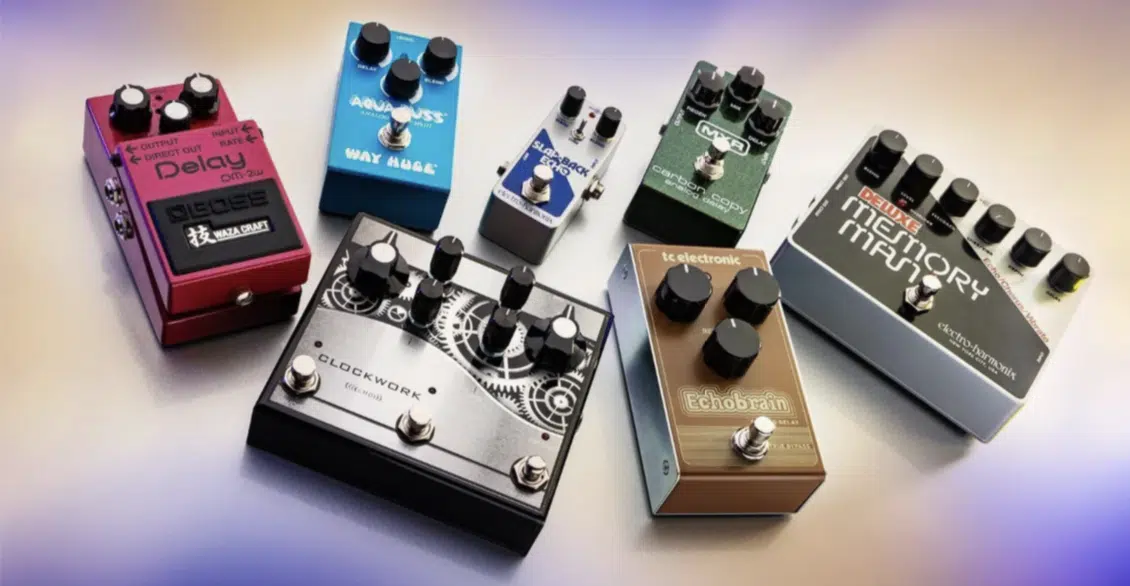
Analog delay is one of the classic delay types that relies on analog circuitry, such as bucket brigade devices (BBDs), to create warm, natural echoes.
Unlike digital delays, analog delays slightly degrade with each repeat 一 rolling off high frequencies and adding a soft, vintage quality to the delayed signal.
I find this delay effect perfect for genres like rock and blues, where the warmth and slight imperfections add a nice nostalgic edge.
One of my favorite ways to use analog delay is on a guitar signal or vocals, where the slightly degraded echo blends beautifully with the original signal.
It will give you a fuller, more organic/authentic feel.
Analog delay pedals often allow you to adjust the delay time, but these units generally max out around 300ms, which works well for short, rhythmic echoes or a tight slapback effect.
Using the feedback knob cautiously can help maintain that subtle, warm echo without letting the delay overpower the mix, which you definitely don’t want.
Adding analog delay to the signal chain can bring an earthy, vintage vibe to even the cleanest recordings.
This is especially true when the signal chain is combined with reverb for a more spacious effect (mind-blowing stuff).
-
Pro Tip for These Delay Types
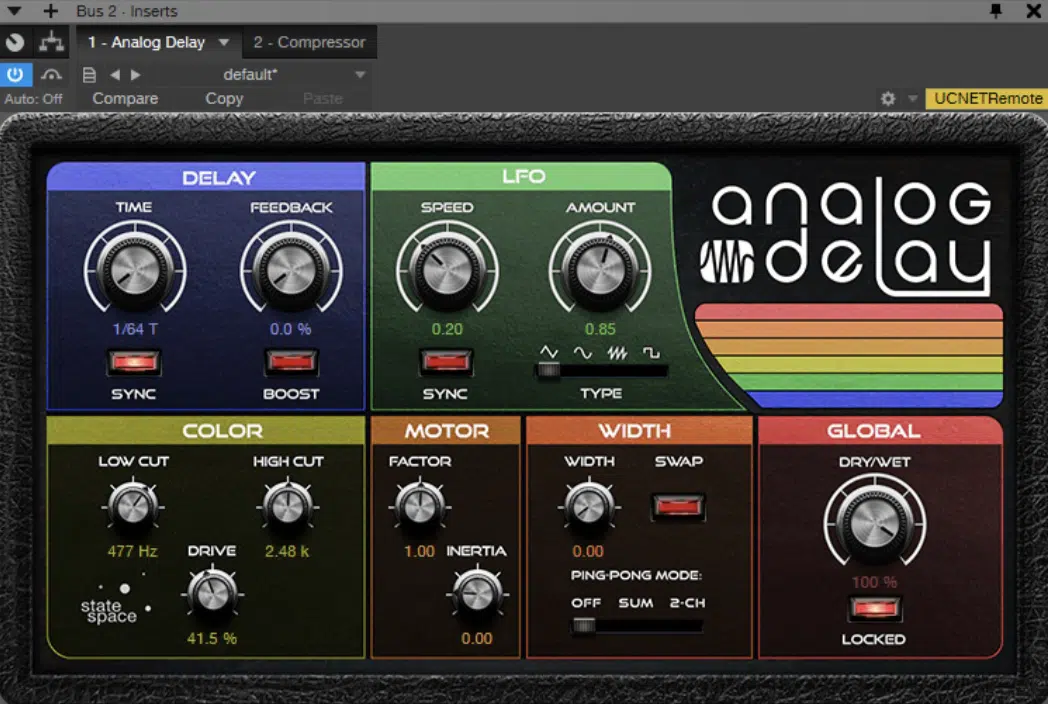
Use analog delay to add warmth and character to digital recordings, especially when the track feels too clean or sterile.
Start with a shorter delay time, around 150-200ms, and keep feedback at a low setting to avoid cluttering the mix.
For added depth, combine analog delay pedals with other delay types (like digital delay) to create a balanced mix of warmth and clarity 一 adding both texture and presence to your sound.
#2. Tape Delay
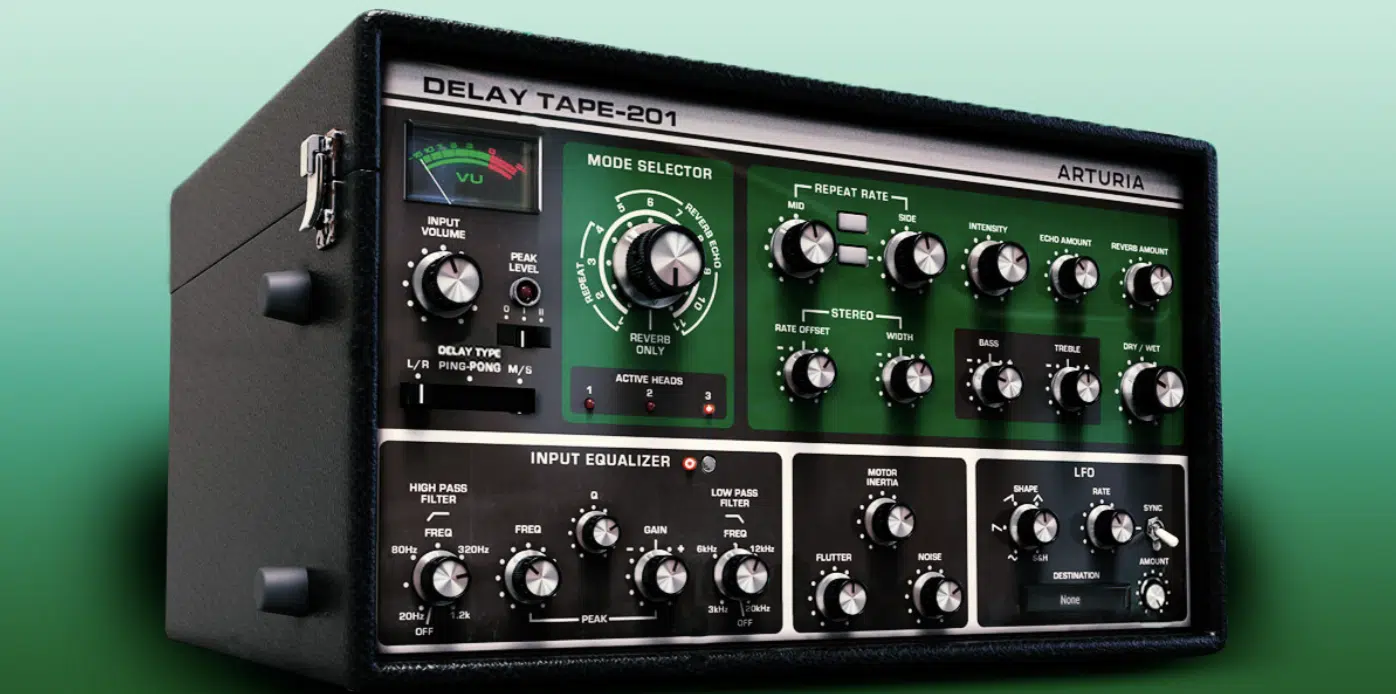
Tape delay is a classic delay type that uses actual magnetic tape to record and play back the delayed signal, resulting in a warm, slightly distorted echo.
This unique delay effect adds nice saturation and subtle pitch modulation due to the natural imperfections of the tape machine.
In turn, each repeat will have a character that’s difficult to achieve with digital delays.
I love using tape delay on guitars and vocals as well to add a vintage feel, especially in genres like rock or dub where a warm, analog tone is key.
It’s all about the overall effect you’re going for though, of course.
The feedback knob on a tape delay controls the number of repeats, and pushing it to higher levels can create long, decaying echoes with a more textured feel.
Many plugins (especially a digital delay pedal) emulate classic tape delay units so you can create that timeless sound without the hassle of using actual tape.
My favorite is Roland Space Echo, which I recommend you check out.
Setting the delay time between 300-600ms produces a super captivating, spacious, atmospheric effect that’s perfect for intros or transitions.
Just like analog, adding a touch of reverb can also enhance the spaciousness of tape delays 一 creating an immersive, retro vibe in any mix.
-
Pro Tip for These Delay Types
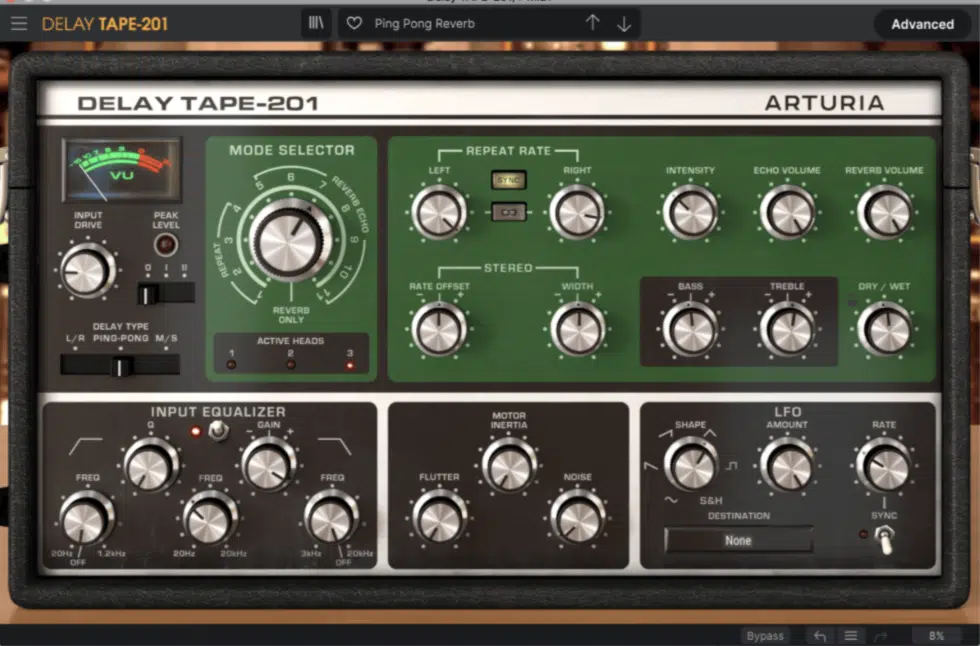
To achieve an authentic tape delay effect, use plugins that model tape saturation, like my favorite Roland Space Echo plugin.
They capture the unique pitch fluctuations, subtle distortion, and tape warmth characteristic of classic tape delays.
You’ll want to set the delay time around 400-600ms for a spacious, vintage echo and adjust the feedback to 40-50% for smooth, decaying repeats.
For even more depth, slightly increase the modulation (if the plugin offers it).
This will emulate the slight warble you’d get from actual magnetic tape without needing it.
#3. Digital Delay
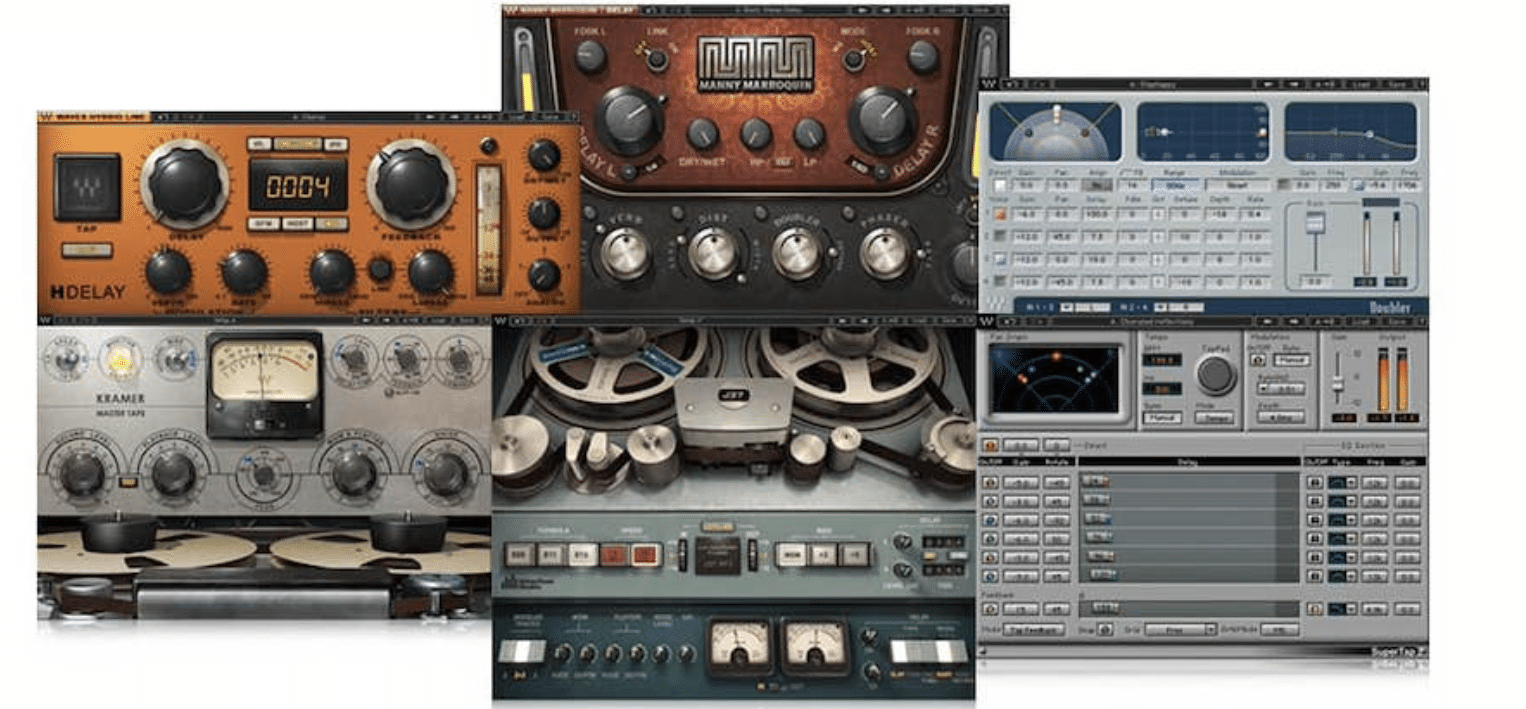
Digital delay is the go-to choice when you need clean, precise repeats that mirror the original audio with razor-sharp accuracy.
Unlike analog delays, which tend to soften and color the sound, digital delays use digital signal processing (DSP) to create exact echoes.
These types of delay are perfect for all popular genres like hip-hop and EDM where clarity and timing are everything.
One feature I rely on in digital delay pedals is tap tempo, which allows you to sync the delay time to the track’s BPM.
NOTE: Syncing to tempo is a huge advantage because it lets the delay effect become part of the song’s groove, creating a structured, rhythmic tape echo that’s super fluid.
Digital delays are incredibly versatile as opposed to analog delay types of course, because they offer an insane range of delay times.
Everything from a subtle 10 milliseconds for thickening effects to several seconds for massive, ambient sounds/echoes.
With feedback settings, you can also create a continuous loop or ambient wash, which works especially well on synth pads or background elements.
I suggest you play around with stereo delay on digital delay units, where you can set different delay times for the left and right channels.
It adds an immersive stereo effect that brings a track to life, which is what makes these types of delays so renowned and sound so sick.
-
Pro Tip for These Delay Types
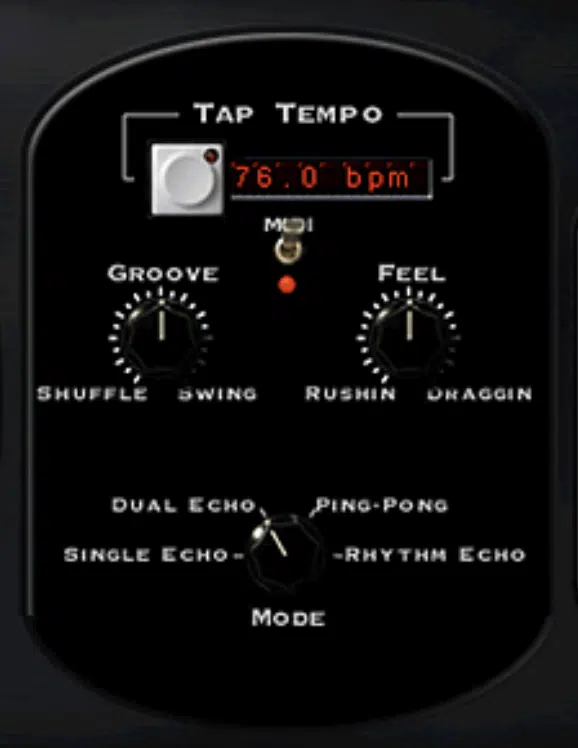
To get the most out of digital delay types for rhythmic effects, experiment with using both tap tempo and precise note-based settings to sync your delay sounds with the beat.
Tap tempo on digital delay pedals is a great way to quickly match the delay to the project’s BPM, especially if you’re trying to capture a pulsing groove.
For even more precision, set the delay mode to a specific note value, like quarter, eighth, or sixteenth notes, to lock the repeats tightly into the beat structure.
If you’re aiming for a more dynamic feel, try dotted or triplet timings to create syncopated echoes that add complexity to the percussion or lead line.
Layering multiple delay lines at different rhythmic subdivisions also brings a nice groove so try it out.
#4. Slapback Delay
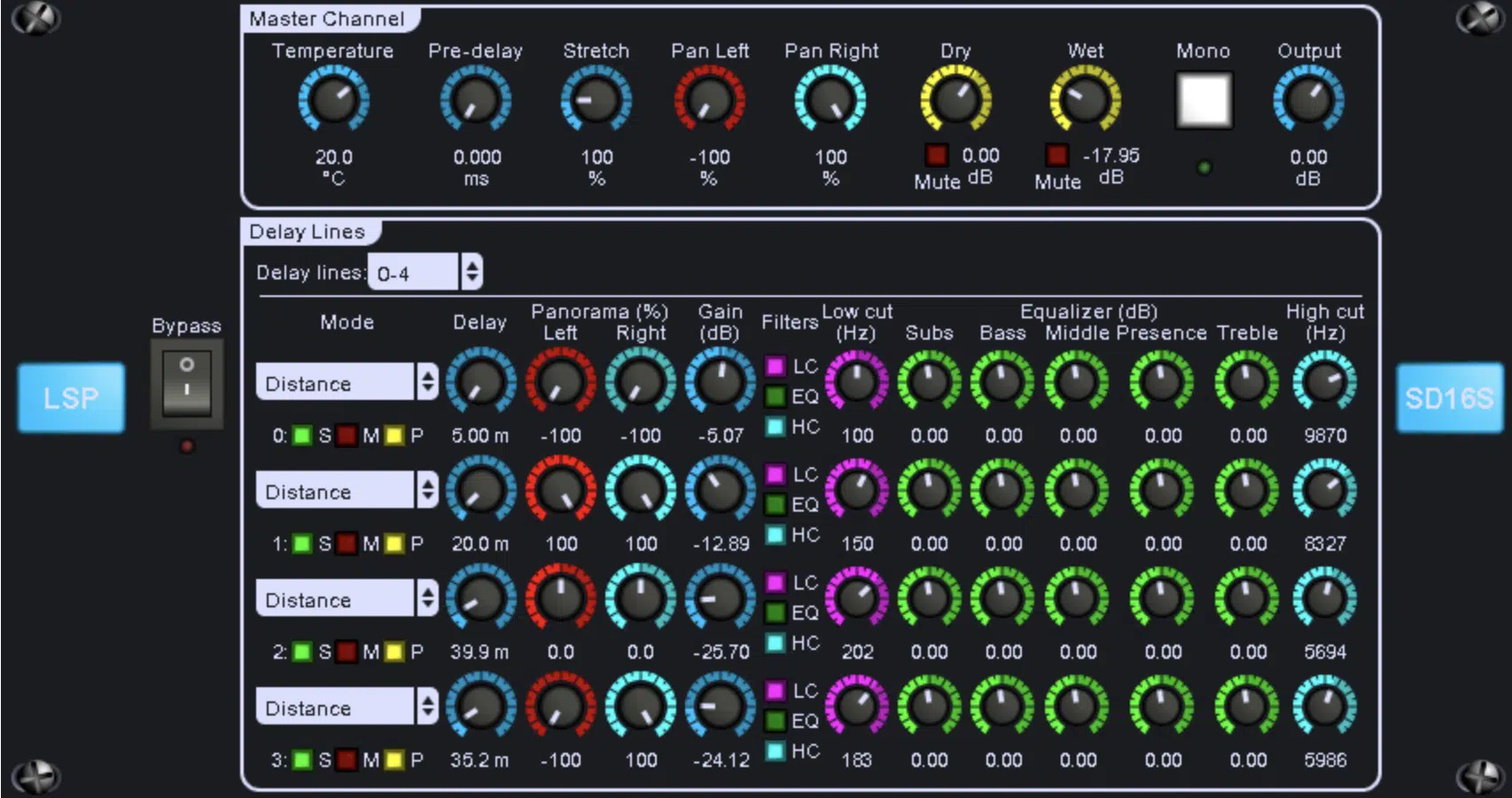
Slapback delay is a short, single-repeat delay with a delay time typically set between 60 and 120 milliseconds.
This delay type is all about adding punch and presence, and it’s famous for its role in 1950s rock and rockabilly, where it added a lively, in-your-face vibe to elements.
I love using slapback delay on vocals when I want that vintage, almost retro feel 一 it makes vocals pop without washing them out in reverb.
By setting the delay time around 100 milliseconds and keeping feedback low or at zero, you get a quick, punchy echo that feels like a natural extension of the original sound.
Slapback delay also works wonders on guitars and drums too (especially snares), where the effect creates a powerful, percussive sound.
Digital delay pedals can be super useful here because they allow for precise control over the delay time.
With the mix set around 40-50%, the delay adds body and presence without overpowering the original signal, so keep that in mind.
-
Pro Tip for These Delay Types
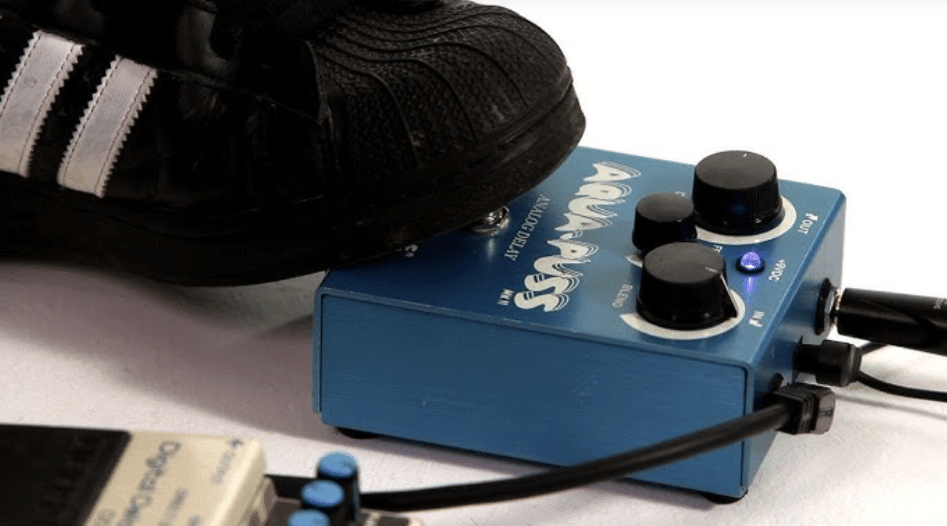
To nail that classic 1950s rock ‘n’ roll slapback sound, try using a digital delay pedal with a delay time around 100 milliseconds and feedback set to zero for a single, distinct repeat.
Digital delay pedals are great for this because they offer fine control over the exact timing.
Adding slapback to vocals or lead instruments with this setting creates a bold, upfront effect 一 giving your track that retro punch.
#5. Double Delay
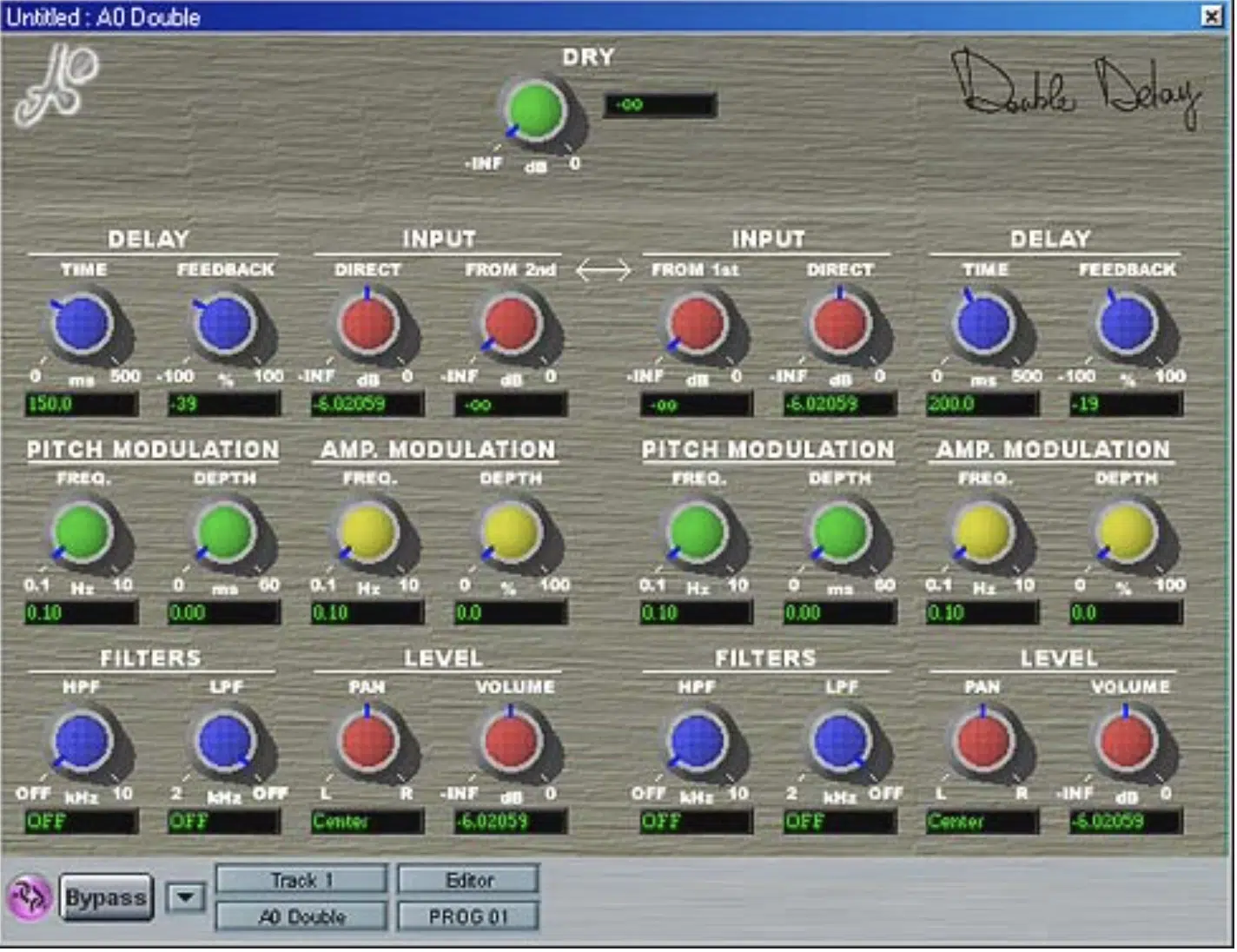
Double delay is a fantastic way to add depth and fullness to a track without recording multiple takes, which can get infuriating.
These delay types use a very short delay time, usually between 20 and 50 milliseconds, to create a doubling effect that thickens the sound and gives it more body.
I find it great when applied to vocals and lead guitars, where it creates a subtle “double” that’s not quite an echo but adds weight and presence.
For example, setting the delay time around 25 milliseconds with minimal feedback (or none at all) gives vocals a show-stopping, fuller feel that sits nicely in the mix.
With digital delay pedals, you have precise control over the delay time, which lets you dial in just the right amount of doubling without creating an obvious repeat.
I recommend you use this technique on a vocal track to make it sound more prominent, especially in a dense mix where you want the vocals to stand out.
All without using heavy reverb, of course.
Keeping the mix control at a low to medium setting allows the doubled sound to blend in naturally 一 adding dimension without making the effect too noticeable.
-
Pro Tip for These Delay Types

Doubling delay is perfect for adding fullness to vocals or lead instruments.
Set your digital delay pedal’s delay time to around 20-30 milliseconds, keeping feedback at zero to avoid audible repeats.
This subtle doubling effect thickens the sound, making it feel more present in the mix, giving the impression of multiple takes without actual layering.
#6. Ping-Pong Delay
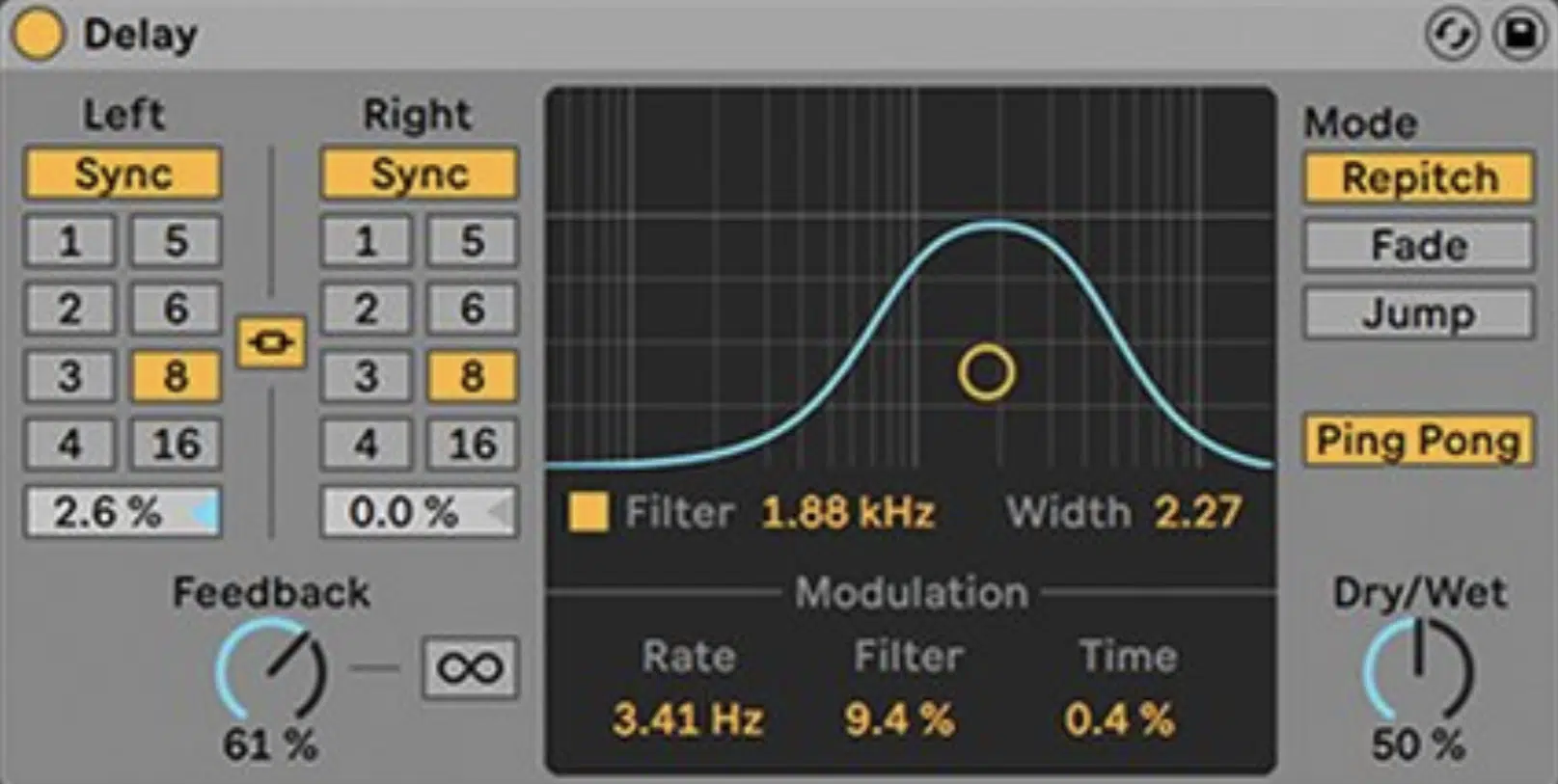
Ping-pong delay is a stereo delay effect that switches between the delayed signal between the left and right channels.
It creates a bouncing effect that adds width and motion.
This delay type is a real go-to for adding stereo depth to mono signals, like a lead vocal or synth line, especially in electronic and pop music.
I set the delay time to match the song’s tempo, usually around a quarter or eighth note, to keep the ping-pong echoes in sync with the rhythm of the track.
By setting a moderate feedback level (around 50%) the delayed signal fills out the stereo field without overwhelming the main sound, which is key.
Ping-pong delay is particularly effective for creating space in a mix without muddying up the center, as it moves the echoes to the sides.
Digital delay pedals with a ping-pong setting make it easy to control the stereo spread and timing for precise stereo effects.
For a unique effect, I sometimes combine ping-pong delay with reverb to create a more immersive, atmospheric sound.
-
Pro Tip for These Delay Types
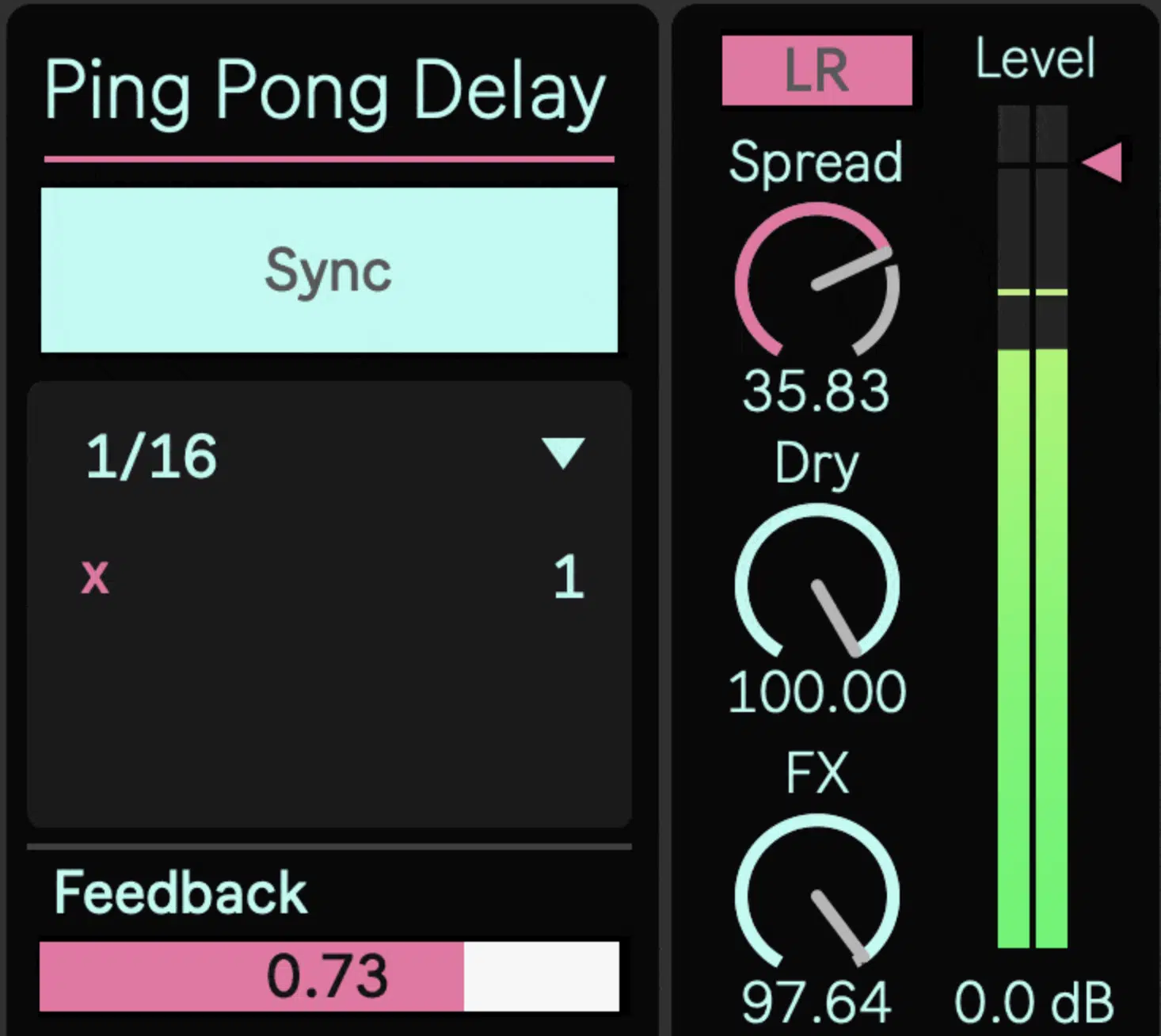
To add width and interest to mono signals, try combining ping-pong delay with automation on the feedback and delay time.
Start with a quarter-note delay synced to the BPM and a feedback setting around 40%, then automate the feedback to increase in certain sections for a more intense stereo effect.
This will create a dynamic, evolving delay that feels like it’s pulsing in sync with the song for ultimate depth/movement.
#7. Multi-Tap Delay
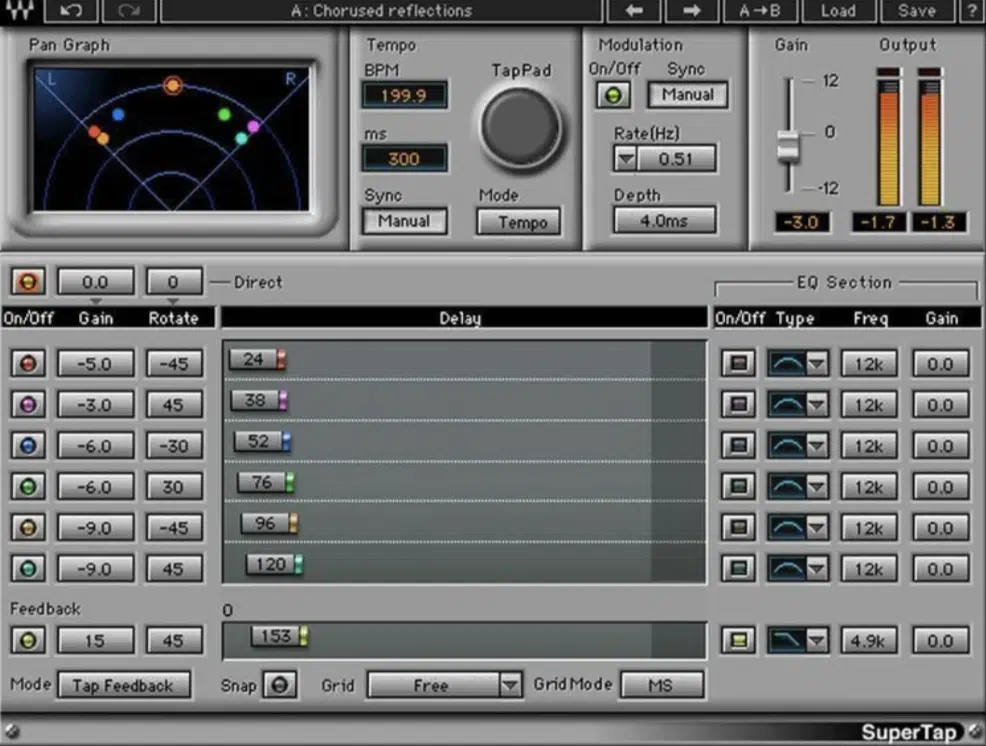
Multi-tap delay is a sick effect that allows for multiple delay taps, each with its own:
- Timing
- Feedback
- Volume settings
It’s perfect for more complex rhythmic patterns.
This type of delay is also great for building intricate soundscapes, especially in ambient and electronic genres, as it can create layers of echo that evolve over time.
I usually set the first tap to a short delay, around 150ms, with minimal feedback…
Then, add longer delays on subsequent taps (like 300ms and 600ms) with increasing feedback for a cascading effect.
With digital delay units or plugins, you can precisely control each tap 一 adjusting parameters like delay time, feedback, and pan position for each one.
If we’re talking drums, multi-tap delay can create a “fill-in” effect that makes the rhythm sound fuller and more engaging, so don’t overlook that either.
Adding multi-tap delay to synth lines or pads creates a textured, swirling atmosphere, especially when panned across the stereo field.
In digital delay pedals, multi-tap modes are a great way to experiment with evolving echoes that interact rhythmically/perfectly with the song.
NOTE: For a fuller effect on a lead line, try using multiple delay lines in your delay mode settings which layers several delay sounds with varying times.
These overlapping echoes are super enticing and interesting.
Simply adjust each delay line slightly to enhance the width and depth of your delay sounds for a more captivating mix, easy peasy.
-
Pro Tip for These Delay Types
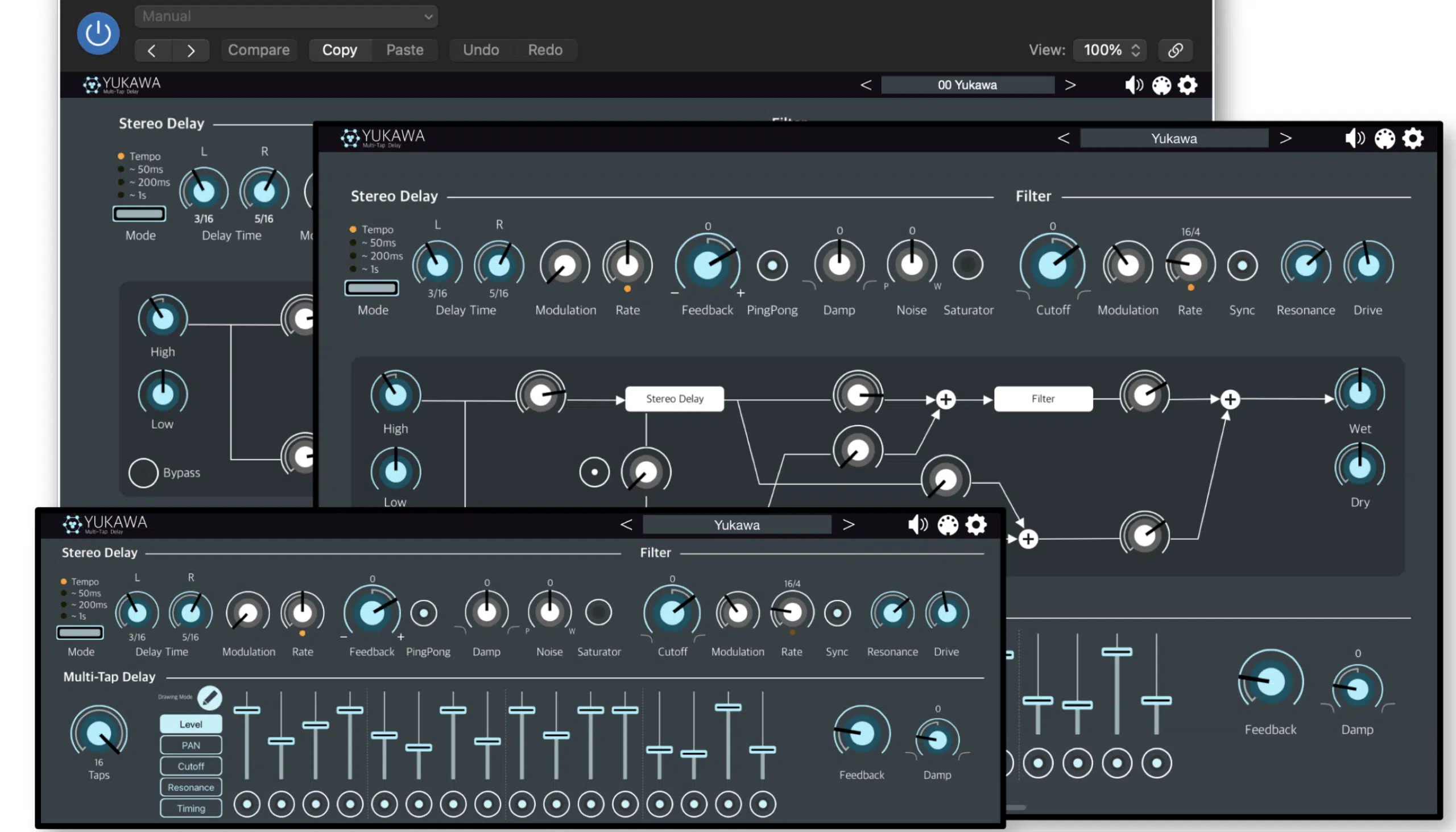
To design intricate delay sequences, set each tap to a different delay time and feedback level, and pan each tap slightly left or right to create spatial depth.
Try starting with a short tap at 100ms on the left, a medium tap at 300ms centered, and a longer tap at 500ms on the right.
By carefully adjusting feedback, you can create a rhythmic pattern that feels like an evolving, multi-layered delay effect across the stereo field.
#8. Modulated Delay
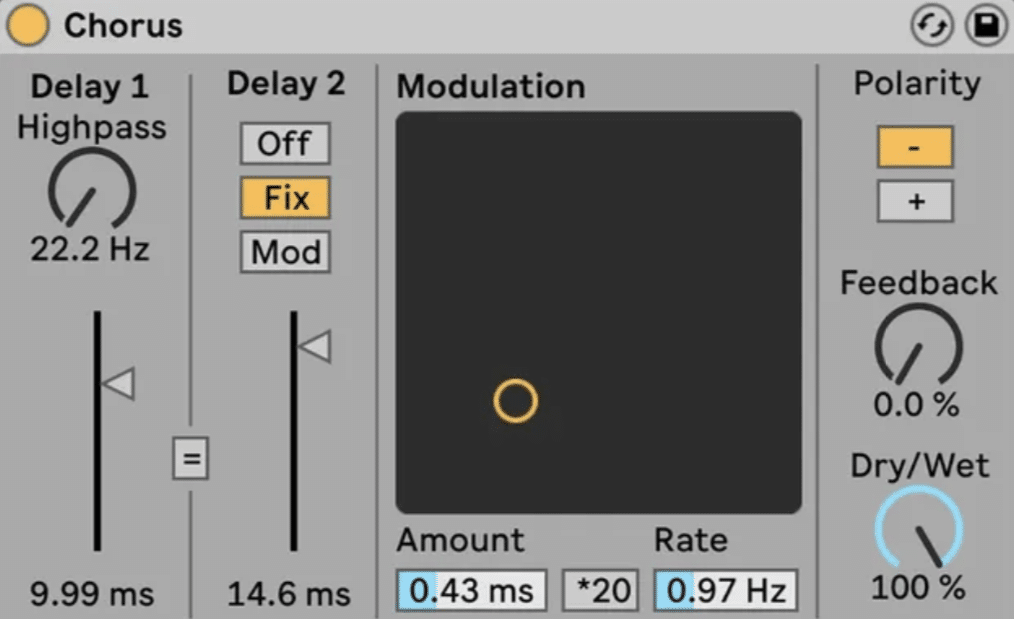
Modulated delay is a unique delay type that adds pitch modulation to each echo, creating a gentle chorus-like effect that brings subtle movement/depth to the delayed signal.
In audio production, this delay type is perfect for:
- Pads
- Synths
- Ambient textures
This is because a touch of pitch fluctuation can add appeal and a dynamic quality to otherwise static sounds.
I often set the delay time between 300ms and 500ms, giving the echoes enough space to breathe while allowing the modulation to introduce a slight warble.
Almost like the effect of a tape machine, which is pretty awesome.
With digital delay pedals and plugins that support modulation, you can control the modulation rate and depth, which directly affects the intensity of the pitch variation.
For a subtle shimmer, keep the modulation depth low…
However, if you’re going for a more pronounced, wavy effect, simply increase the depth and slow down the rate for a more distinct movement.
Modulated delay works well in electronic music and cinematic sound design, where adding warmth and unpredictability is key to creating a captivating atmosphere.
When layered with other delay types (like a stereo or ping-pong delay) modulated delay can fill out the stereo field and add a sense of unmatched spaciousness to your mix.
-
Pro Tip for These Delay Types
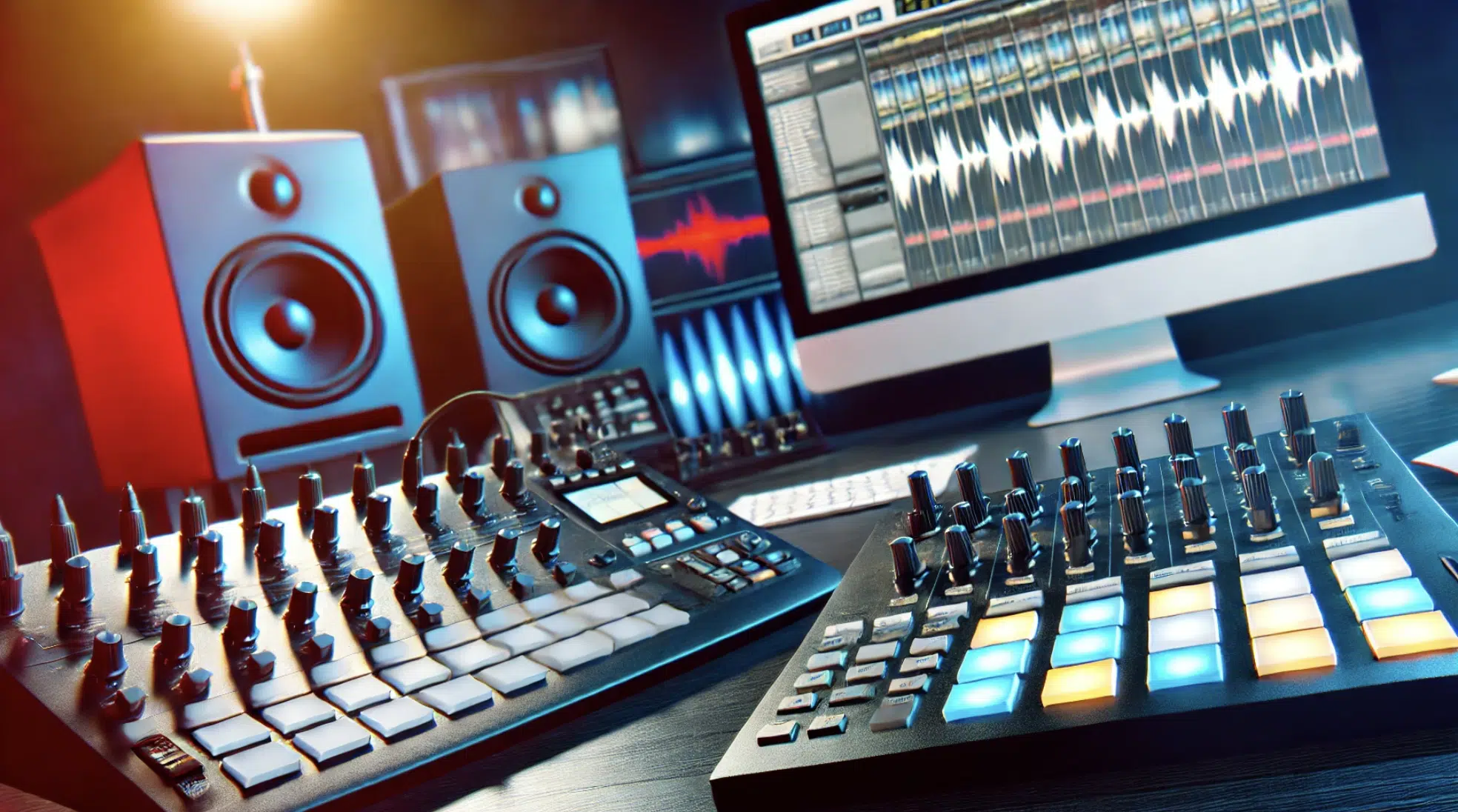
For a dynamic, evolving sound, set a slow modulation rate (around 0.3-0.5Hz) with a moderate depth to add movement to each delay repeat.
To create even more interest, automate the modulation rate over time 一 gradually increasing it during build-ups or transitions for a swelling effect.
This can help digital delay pedals mimic the warmth of analog delay while creating a constantly shifting, textured delay effect to keep the listener hooked.
#9. Reverse Delay
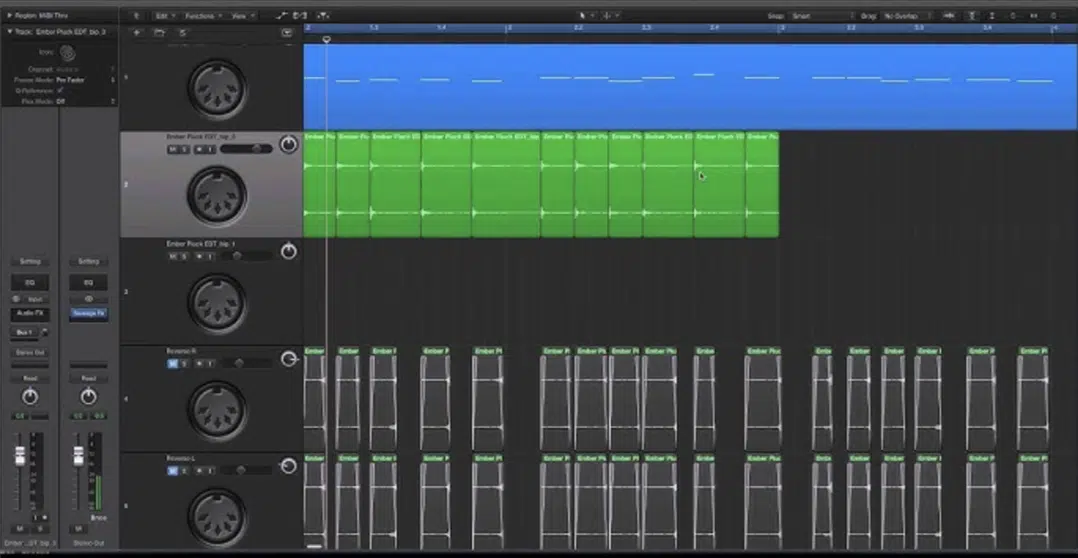
Reverse delay is pretty cool because it flips each echo backward to create a haunting, dreamlike effect that’s perfect for adding an ethereal sound quality to vocals or synths.
Instead of playing echoes in their original order, reverse delay produces a backward playback, like the name implies.
It can make the delayed sound feel mysterious or unexpected which I personally love.
You can use reverse delay to build tension in a mix (especially in breakdowns or transitions) where it adds a unique texture that draws the listener’s attention.
With digital technology it’s easy to control parameters like delay time and feedback so you can manipulate the reverse effect for subtle or dramatic results; dealer’s choice.
Typically, I set the delay time to around 400ms with low feedback for a soft, subtle reverse effect that blends with the original signal.
For a more obvious effect, I’ll increase the feedback 一 creating a longer tail that feels otherworldly and insanely immersive.
Reverse delay can be taken up a notch when paired with reverb, adding extra space and depth to the backward echoes.
-
Pro Tip for These Delay Types
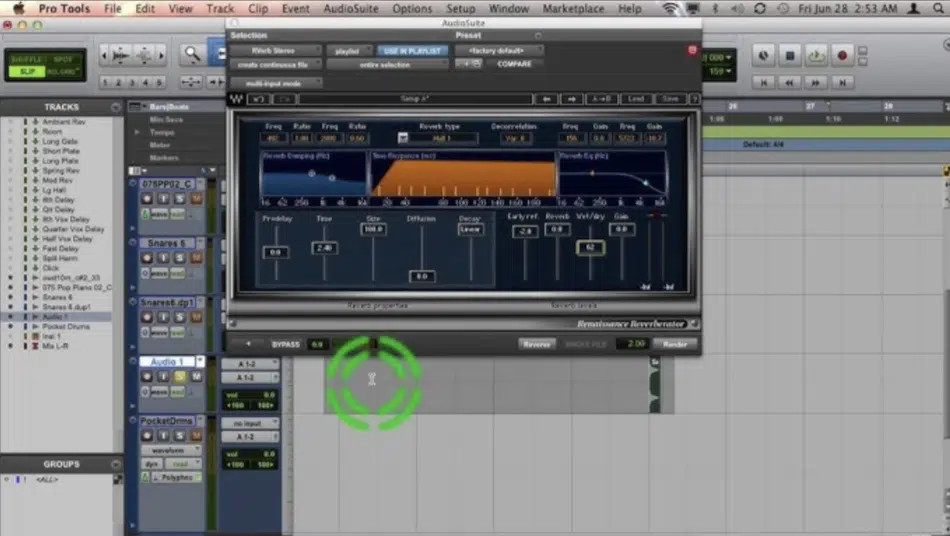
Use reverse delay with caution to add unexpected textures in your mix.
Try setting a delay time of around 400ms and automate the feedback to increase only during specific parts of the song, such as transitions or climactic moments.
This keeps the effect surprising and impactful, adding a unique, suspenseful twist without overshadowing the main elements of your track.
#10. Granular Delay
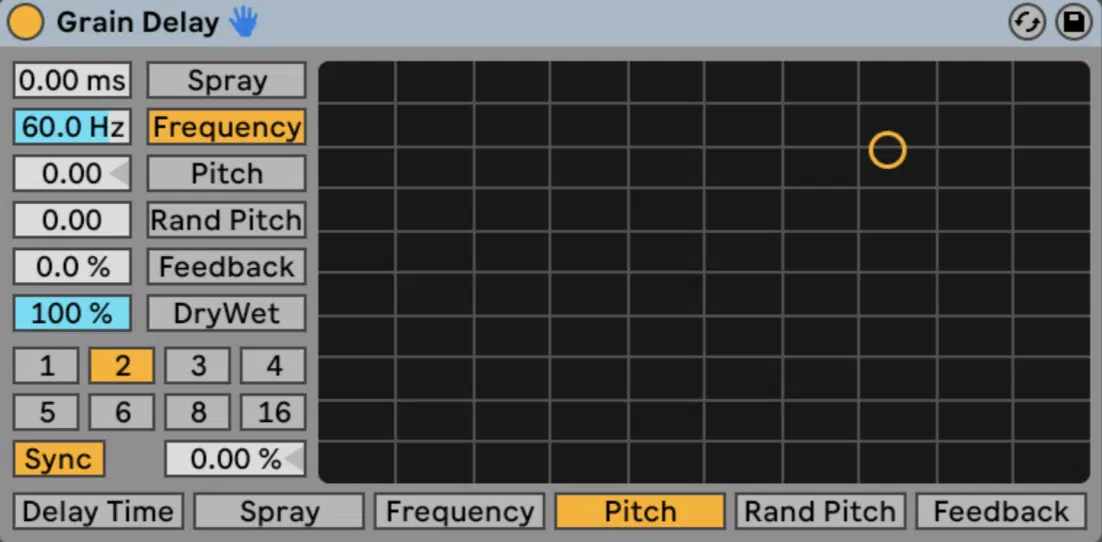
Granular delay is a unique effect that breaks the audio signal into tiny “grains,” manipulating each grain independently to create complex, evolving soundscapes.
This delay type is highly popular in ambient and experimental genres, where its ability to transform simple sounds into detailed textures is invaluable.
I usually set the delay time to around 500ms so each grain can overlap and interact, producing a dense, layered effect.
With granular delay plugins, you can control parameters to shape the texture however you’d like, for example:
- Grain size
- Density
- Pitch
Adding pitch or time-stretching within each grain can produce even more interesting, out-of-the-box sounds that add beautiful complexity to a track.
I find granular delay perfect for turning a straightforward melody into a swirling, fragmented atmosphere.
For an extra touch, combining granular delay with reverb can give the effect a spatial depth that feels like it’s in your soul, or you’re in a movie.
-
Pro Tip for These Delay Types
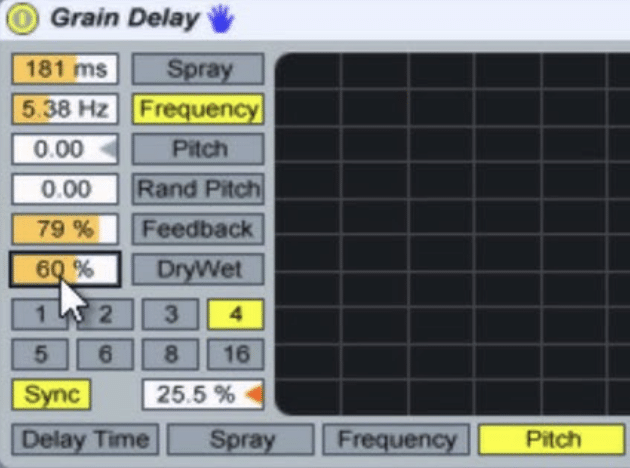
Experiment with granular delay to transform simple sounds into rich, complex soundscapes by adjusting the grain size and density.
Try setting a shorter delay time with a high grain density to create a densely textured, almost “cloud-like” effect.
This technique works especially well for adding an ethereal, evolving quality to pads, ambient textures, or even background vocal layers.
#11. Dynamic Delay
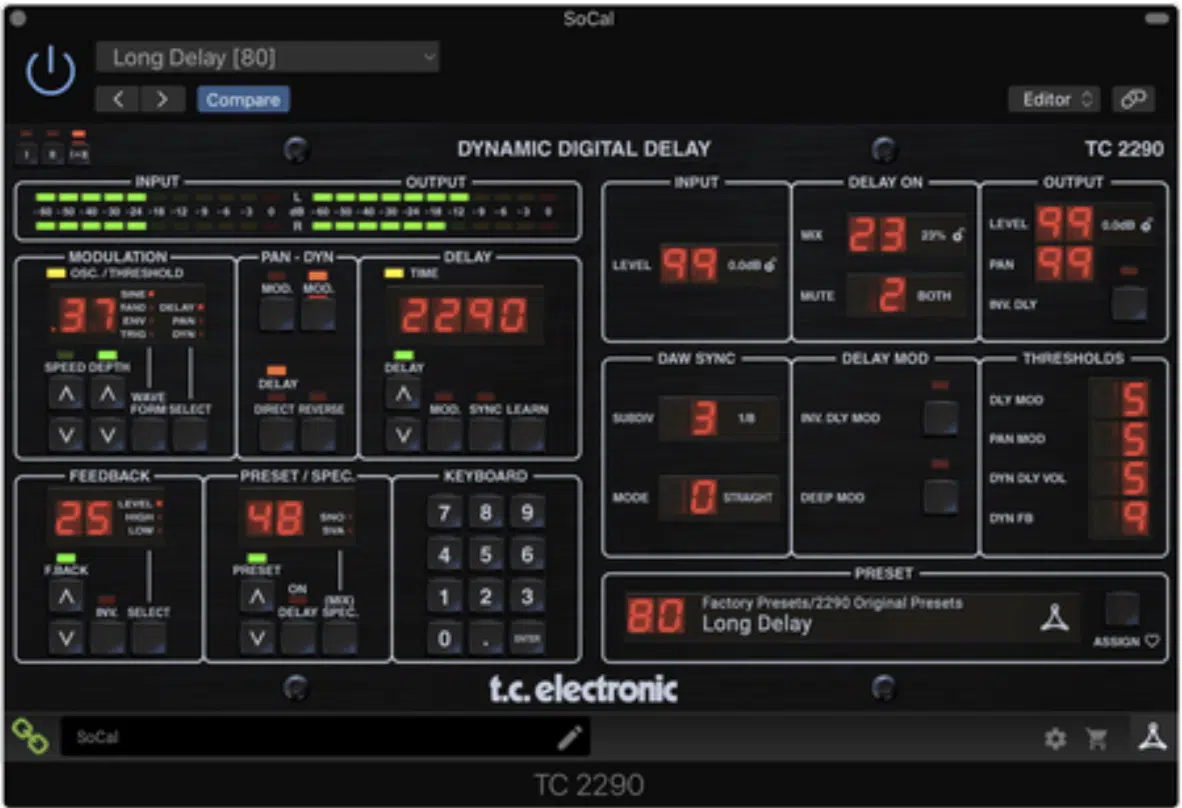
Dynamic delay is a smart effect that adjusts the level of the delayed signal based on the dynamics of the original audio.
This means that when the input signal is louder, the delay effect is more subdued, and when the input is softer, the delay becomes more prominent.
It’s a great way to keep delays present without overwhelming the mix during louder sections 一 making it especially useful for vocals and lead instruments.
I usually set a moderate delay time, around 300ms, with a feedback setting around 40%, so the effect is subtle but super consistent.
If your digital delay pedal has dynamic options, you can control the sensitivity, manipulating how reactive the delay is to the input signal.
Dynamic delay is great for complex arrangements where you want to maintain clarity and balance, as it automatically adjusts based on the energy of the track.
This delay effect adds a polished, professional touch by subtly enhancing quieter sections without interfering with louder parts.
-
Pro Tip for These Delay Types
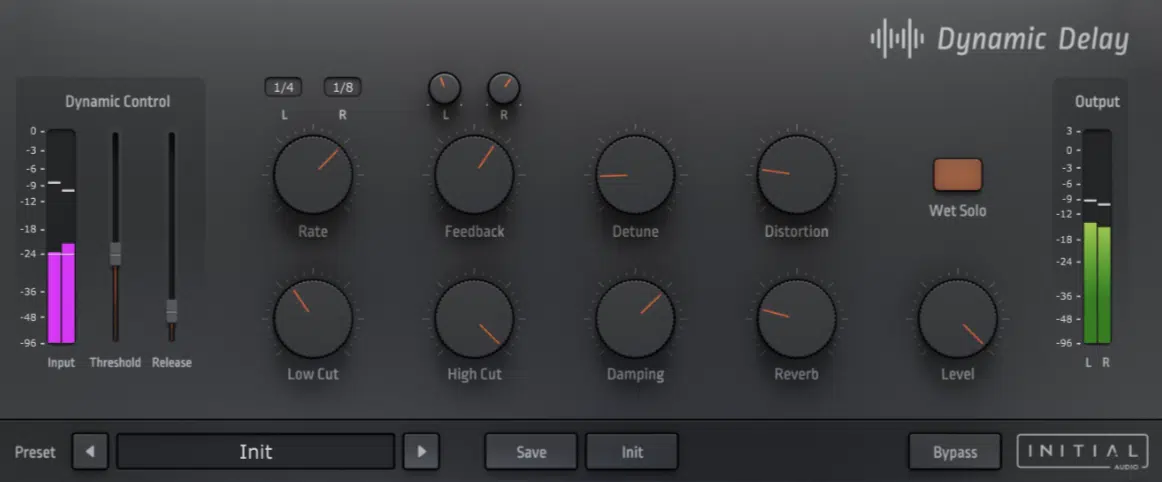
Use dynamic delay to make sure that delay effects shine during softer passages while staying controlled in louder sections.
Set the sensitivity so that the delay “fades in” during quiet moments and “pulls back” when the mix gets busier.
This is perfect for maintaining clarity, especially in dense arrangements or vocal-heavy tracks like we just talked about.
#12. Stereo Delay
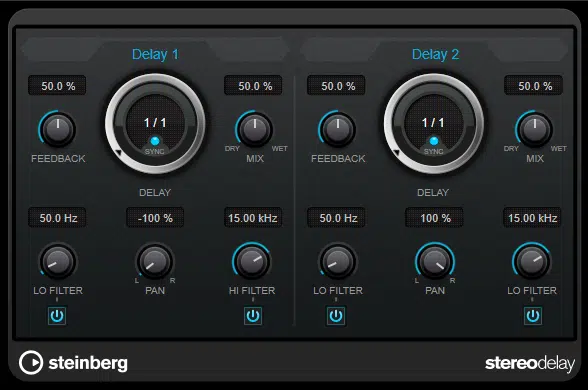
Stereo delay is awesome as well because it adds dimension by independently setting different delay times for the left and right channels.
This creates a wide, spacious stereo effect.
I love using stereo delay on mono sources to add a sense of space without muddying up the center of the mix, which nobody has time for.
For example, I might:
- Set the left channel to a shorter delay time, like 250ms
- Set the right channel to a longer one, around 500ms
When I do that, it gives me this sick offbeat echo that feels like you’re literally in a music production movie or a VR game.
Stereo delay is very popular in EDM and pop where a wide stereo field helps to really get your point across and tracks are very impactful.
And, of course, you can always control the delay time, feedback, and even panning for each channel to customize the stereo spread even more.
Keeping feedback low (around 30-40%) ensures that the effect remains subtle, blending perfectly well with the original signal.
Bottom line, stereo delay is a powerful audio production tool for creating depth 一 making elements of the mix feel bigger and more enveloping.
-
Pro Tip for These Delay Types

To create depth, set slightly different delay times for each channel, such as a quarter note on the left and an eighth note on the right.
This panned delay effect makes the sound feel like it’s wrapping around the listener, adding a killer stereo effect.
Play around with adjusting the panning to achieve the best spatial depth for your track.
#13. Tempo-Synced Delay
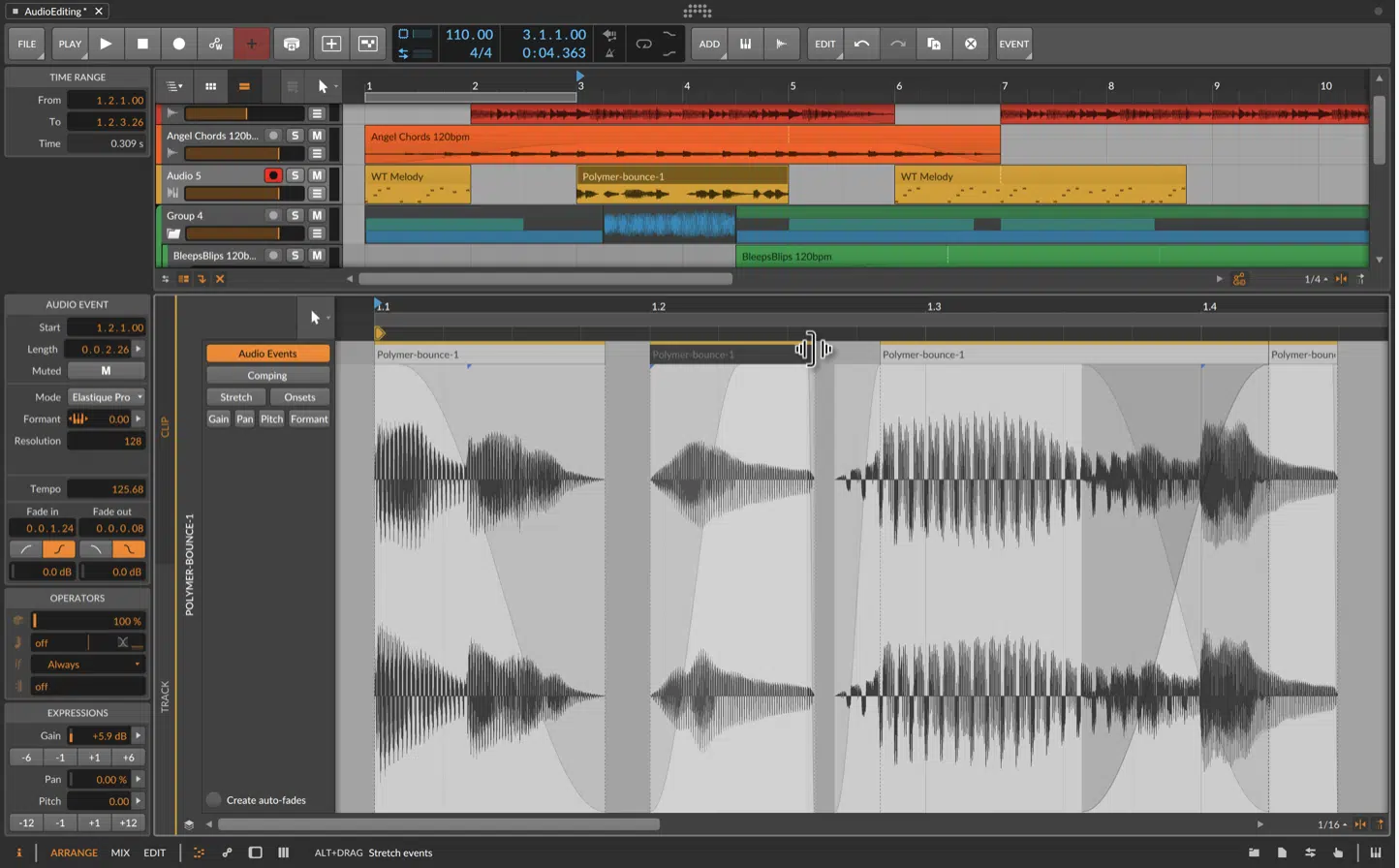
Tempo-synced delay is designed to align with your project’s BPM to lay down rhythmic echoes that fit flawlessly within the track’s groove.
Setting delay times to match specific note values, like:
- Quarter notes
- Eighth notes
- Dotted notes
It makes sure the delay feels musically locked in 一 making it perfect for epic rhythms.
I like to play around with different synced note values to find the right feel, sometimes using a quarter-note delay on vocals for a subtle pulse.
Or, dotted eighths on synths for a syncopated effect.
Tempo-synced delay, which you’ll find on any digital delay pedal plugins, is where you can easily choose note-based delay times.
By combining synced delays with a moderate feedback setting (about 50%), you can enhance the track’s groove without completely destroying it.
This delay type brings a balanced, rhythmic quality to the mix, connecting each echo with the beat.
-
Pro Tip for These Delay Types
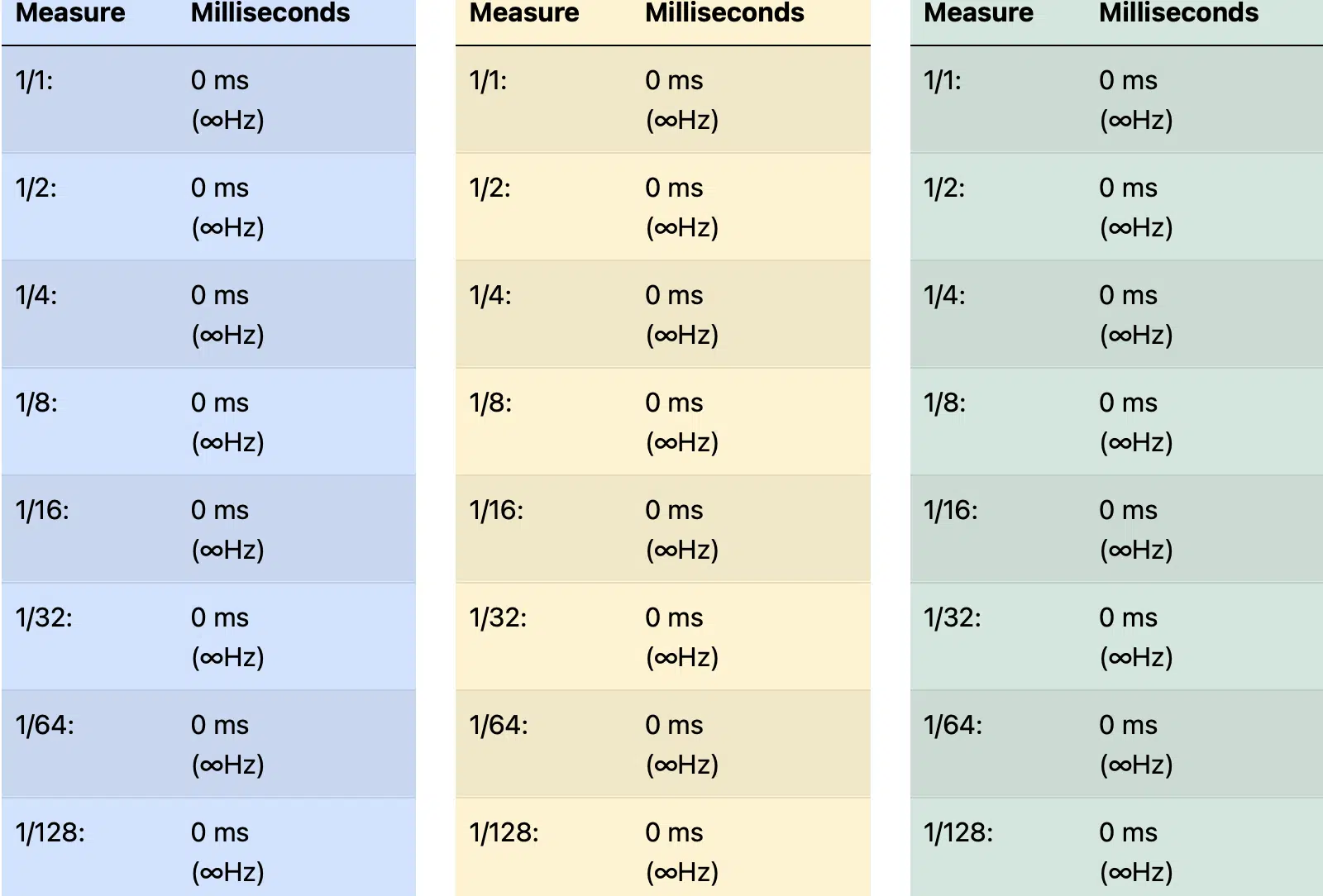
Sync your delay to the song’s BPM to maintain tight rhythmic alignment, creating a unified feel in your mix.
Make sure to experiment with different note values, like triplet or dotted timings, for unexpected rhythms.
This technique adds subtle complexity and gives your track a professional polish that elevates the overall groove, big time.
#14. Ducking Delay

Ducking delay is one of the most on point delay types for keeping your mix clean, especially when working with lead vocals.
It automatically lowers the delayed signal when the original signal (or input signal) is present, only letting the echoes come through once the main sound drops in volume.
It’s a sick delayed sound that you should definitely get familiar with.
For example, I love using ducking delay on vocals, setting the delay time to around 400ms with a feedback setting of 30%.
This way, the echoes fill out the space only when the vocal rests.
Ducking delay is available on most digital delay pedal plugins, which allow you to control the ducking threshold and how much the delay fades in.
This type of delay effect is great for creating a clean, spacious sound without messing with the original audio.
Using ducking delay on other instruments, like guitars or synths, can also add a subtle sense of movement and space, so you should try that out as well.
-
Pro Tip for These Delay Types

Use ducking delay on vocals to keep them clear while adding depth that doesn’t compete with the main vocal line.
Set the threshold so that the delay effect fades in naturally during vocal pauses, enhancing the overall feel.
This helps keep a focused vocal sound while still benefiting from the ‘spaciousness’ of delay effects.
#15. BBD (Bucket Brigade Device) Delay
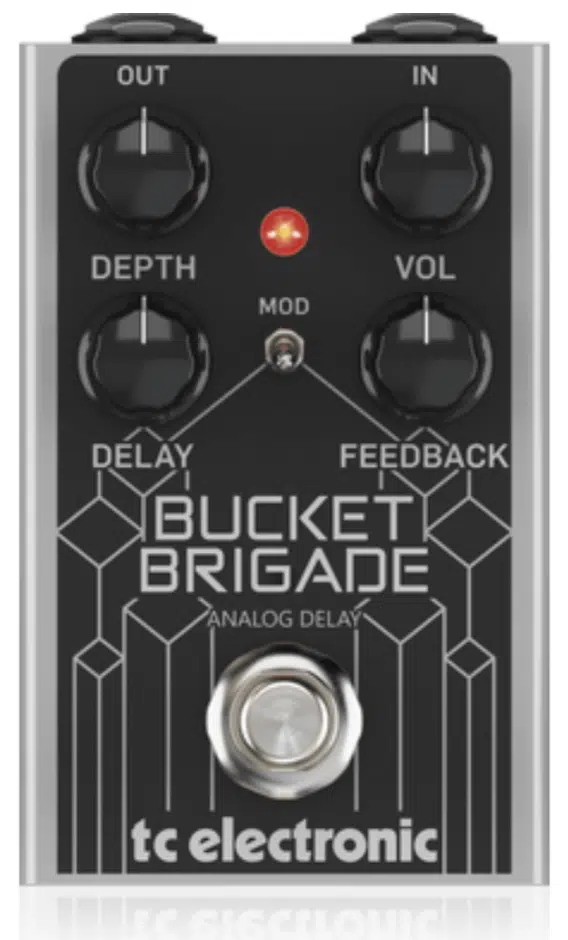
BBD delay (bucket brigade delay) is a classic analog delay type that uses a series of capacitors to pass the audio signal along.
It gives each repeat a warm, slightly degraded quality.
This delay type is loved for its nostalgic, “vintage” character, which introduces subtle high-end roll-off and a slight loss of fidelity with each repeat.
The effect was initially limited to shorter delay times, usually maxing out around 300ms, which lends itself well to slapback and doubling effects.
I often use BBD delay when I want to add a touch of old-school warmth to a mix.
Some analog delay pedals incorporate BBD technology, so you can adjust delay time and feedback while enjoying the unique tonal color it provides which is awesome.
This type of delay effect is excellent for genres like rock and blues, where a slightly gritty, organic sound can add a lot of character.
BBD delays bring out the imperfections in a way that digital delays often can’t match, giving your track a human touch.
-
Pro Tip for These Delay Types
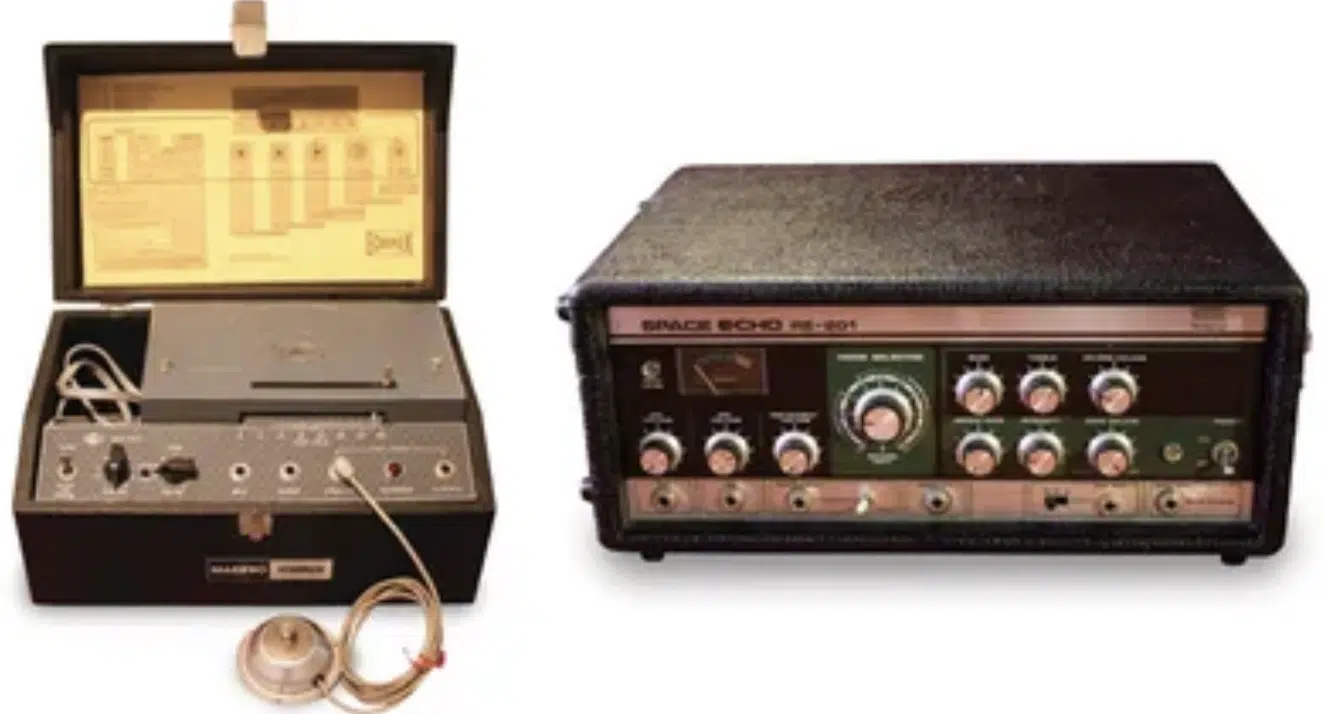
Incorporate BBD delay to introduce a nostalgic, degraded sound quality that adds warmth and character.
Set a shorter delay time, around 200-300ms, with moderate feedback for a subtle echo that doesn’t overpower the original signal.
This effect pairs well with reverb for a lush, atmospheric feel that’s perfect for vintage-inspired tracks.
#16. Tape Stop Delay
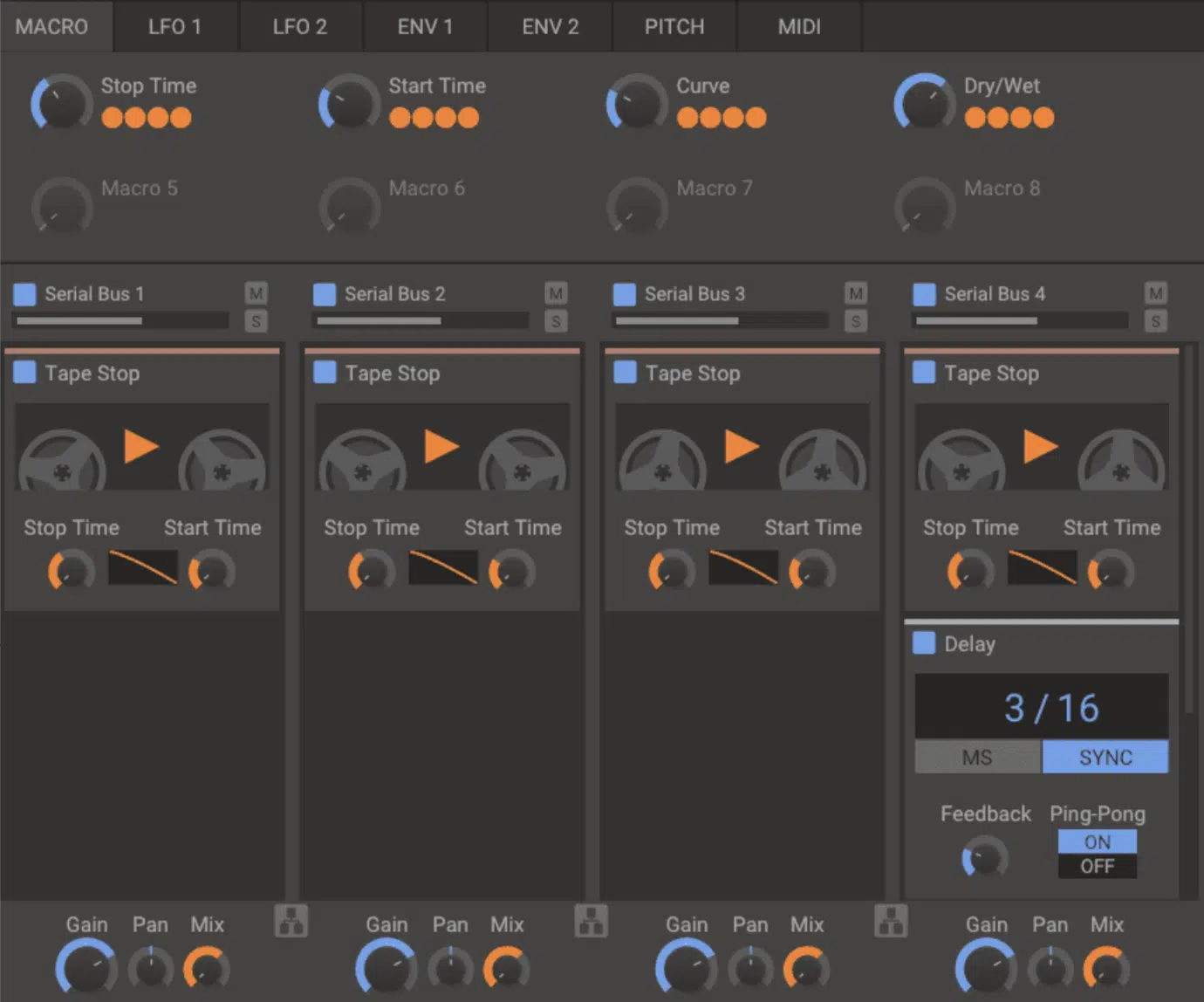
Tape stop delay simulates the classic tape machine “slow-down” effect, where the delayed signal gradually drops in pitch and speed.
It creates a dramatic, winding-down effect.
This type of delay is fantastic for adding a bit of suspense or surprise to transitions, breakdowns, or intros in electronic and hip-hop tracks.
I like to use tape stop delay on synths or vocals to signal a transition 一 setting a delay time of around 500ms with moderate feedback to let the effect fully play out.
NOTE: Any digital delay pedal or plugin with tape stop settings will let you control the “stop speed” so you can choose how quickly the delay effect slows down.
Adding a bit of reverb can enhance the effect, which makes the delayed signal feel like it’s fading into a wide, open space as it slows down.
Tape stop delay is an impactful tool that, when used properly (and not overdone), can add dramatic flair and creative tension to your mix.
Pro Tip for These Delay Types
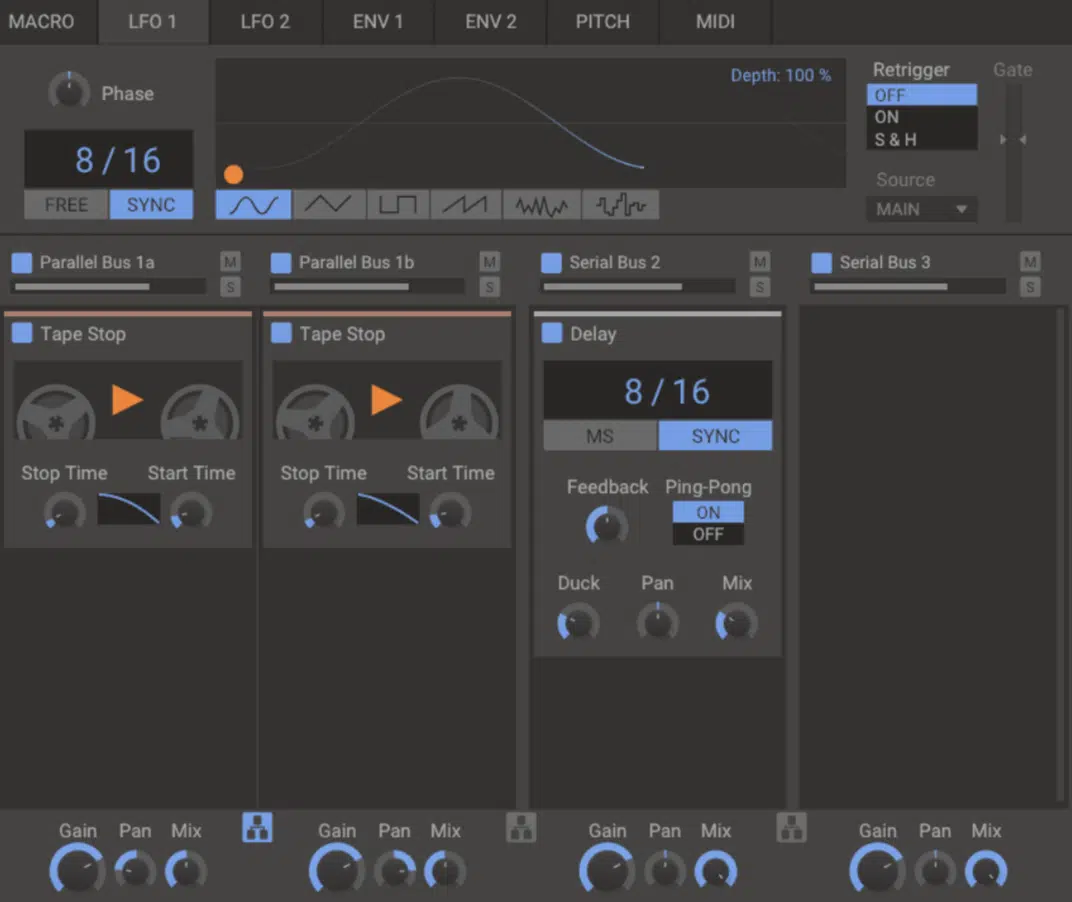
Use tape stop delay to create dramatic pauses or transitions by adjusting the “stop” speed for a slower, more intense pitch drop.
Start with a longer delay time, around 600ms, and experiment with high feedback settings to extend the effect.
This works well in breakdowns or bridge sections, where a sudden tape stop effect can add excitement and surprise to the arrangement (which is what it’s all about).
Final Thoughts

Delay, delay, delay… It’s all about adding depth, space, and character to your music.
Whether you’re creating ambient soundscapes or driving rhythmic patterns, understanding various delay types can completely transform your tracks.
Just remember that it’s more about subtle additions, not overusing anything.
So, make sure to avoid cluttering your mix or relying too heavily on a single effect, and you’ll master the art of delay in no time.
To check out different delay types firsthand, check out the legendary Free Project Files pack, created by the top producers in the game.
It includes 3 professional-quality project files compatible with Ableton, FL Studio, and Logic Pro.
Each one shows the use of various delay effects 一 providing a clear, firsthand understanding of how to apply them like an expert.
By analyzing these projects, you can see exactly how different delay types are thrown into mixes, basically giving you the cheat codes to top-tier production.
Remember, the key to mastering delay effects lies in constant experimentation, focus, dedication, and listening very closely.
By understanding and applying different delay types, you can add depth and interest to your tracks and make them way more engaging/dynamic.
Until next time…







Leave a Reply
You must belogged in to post a comment.